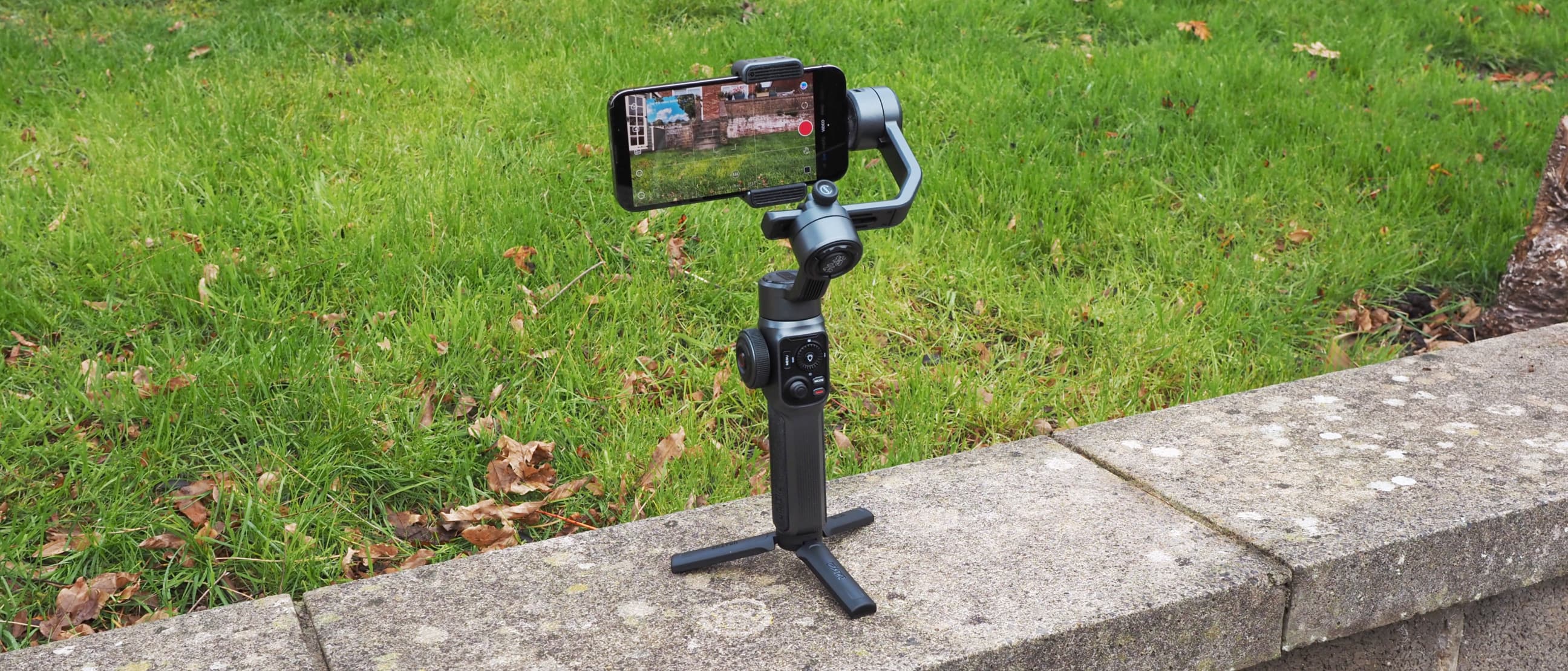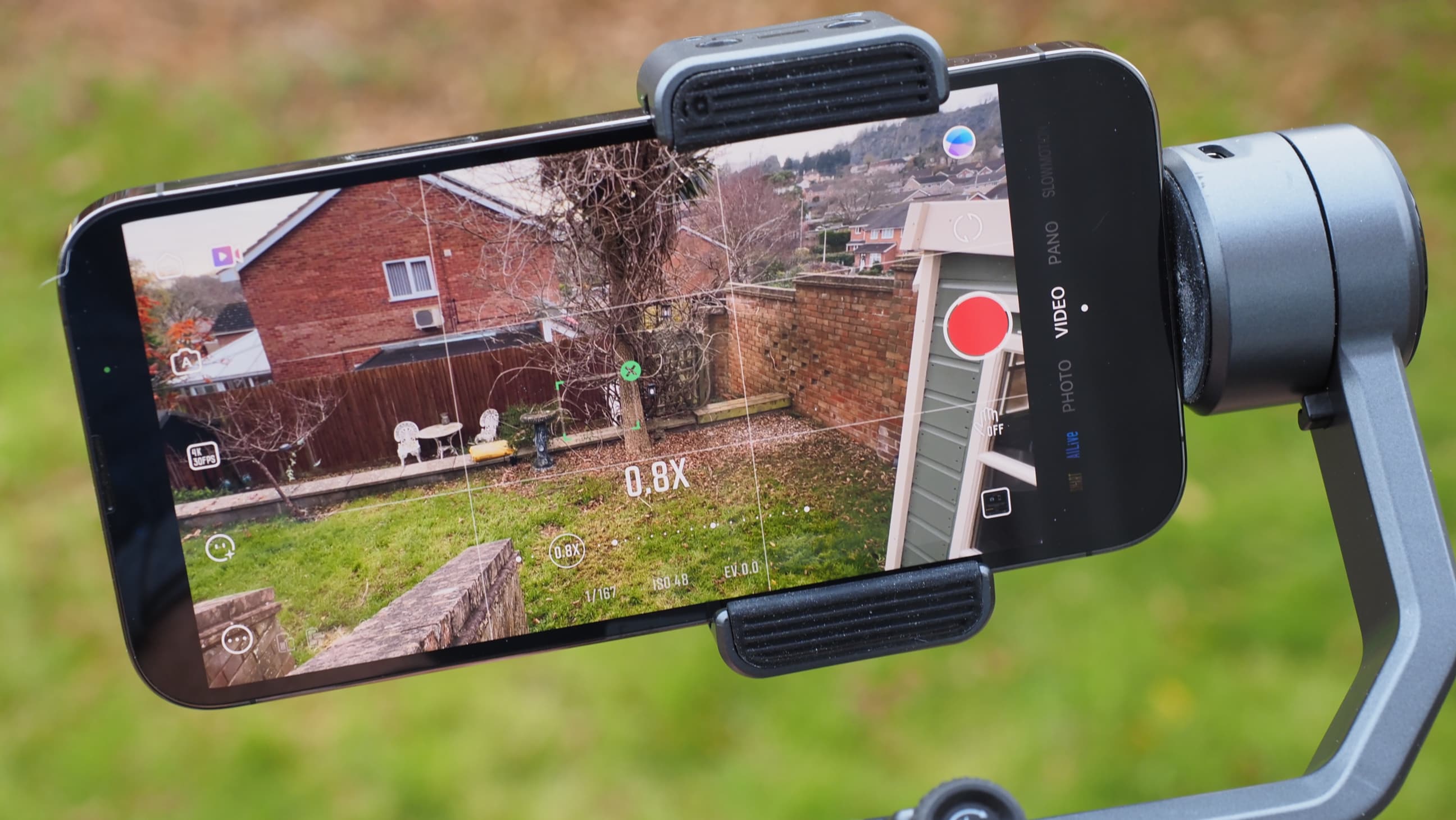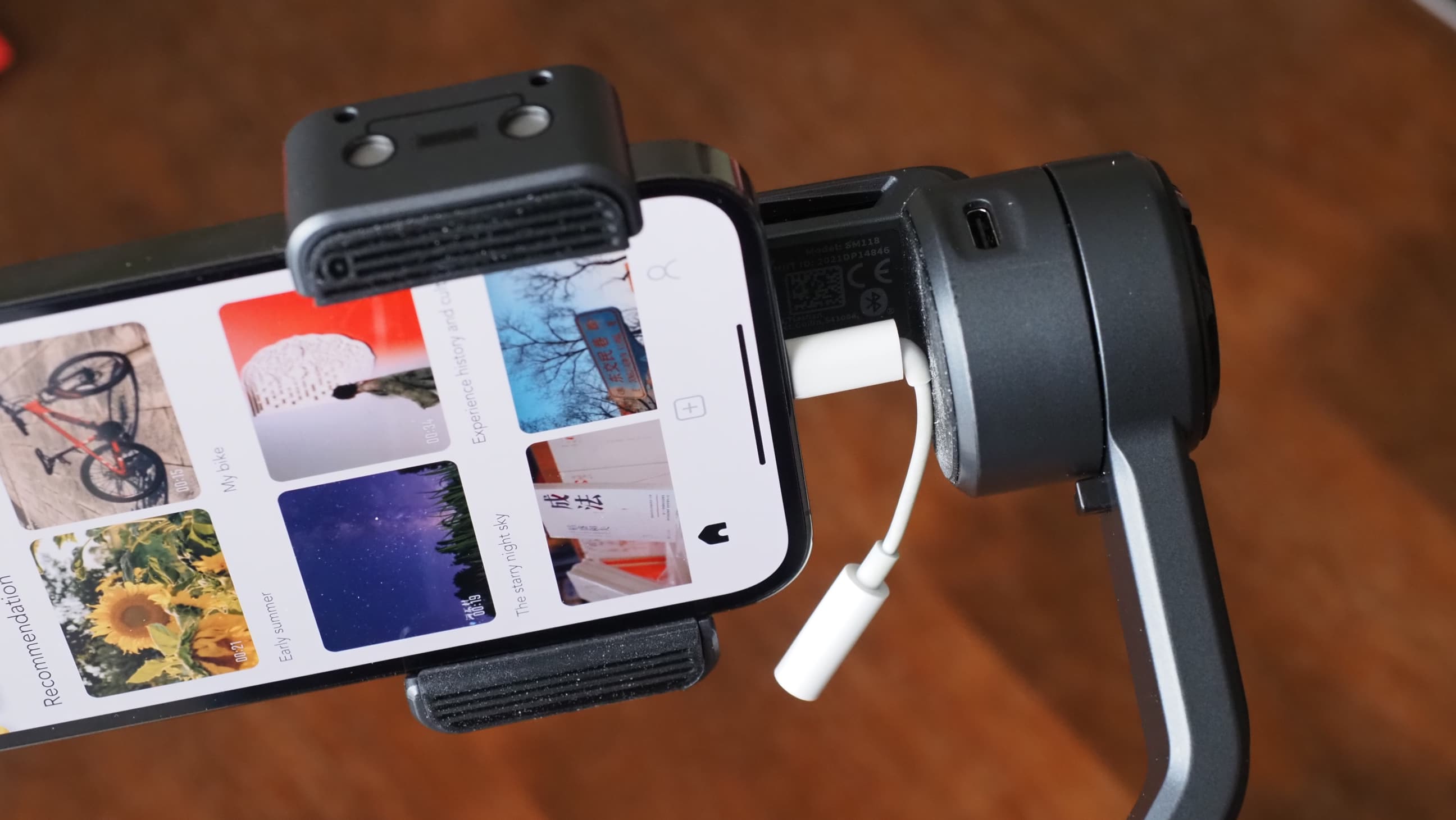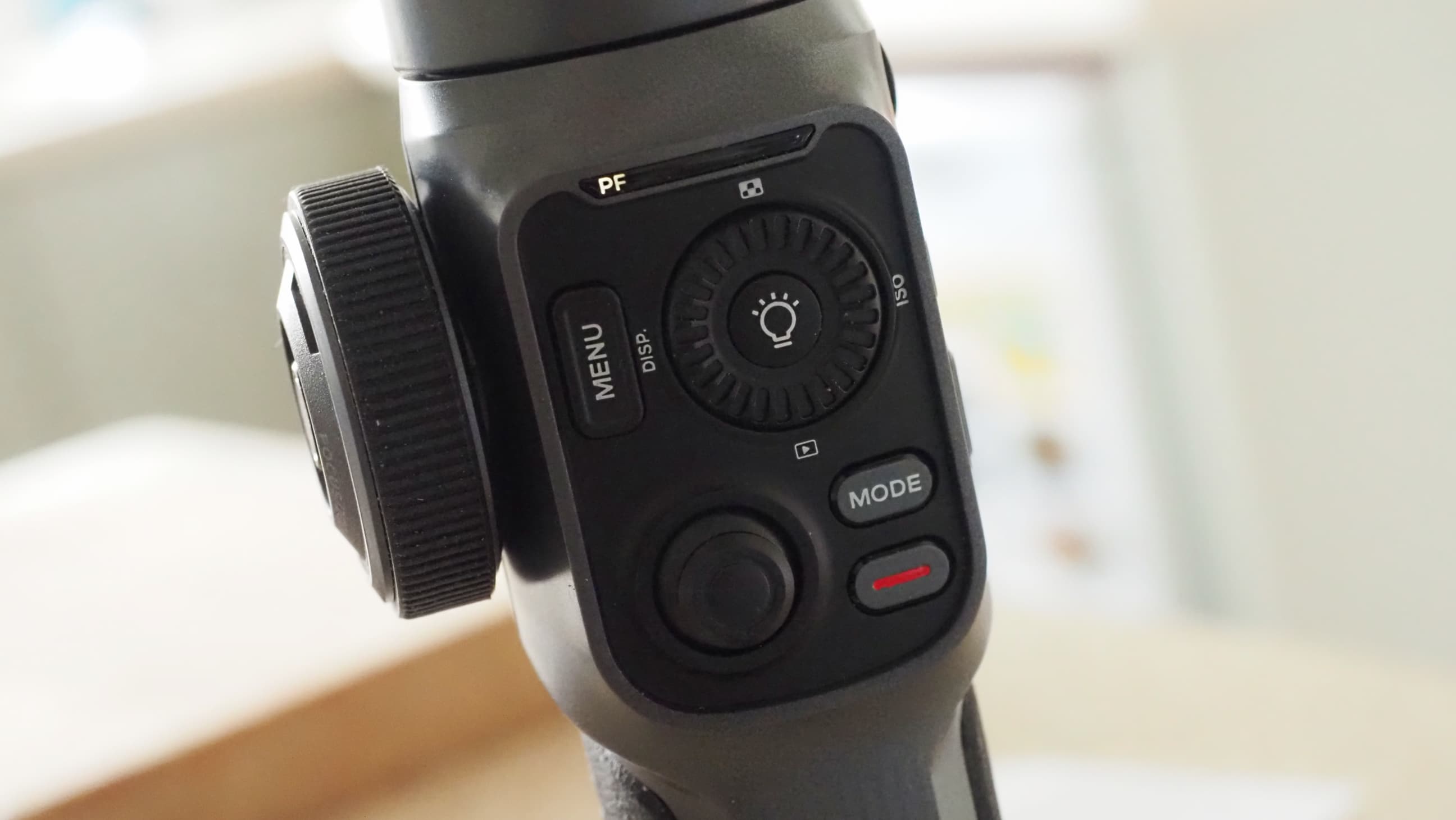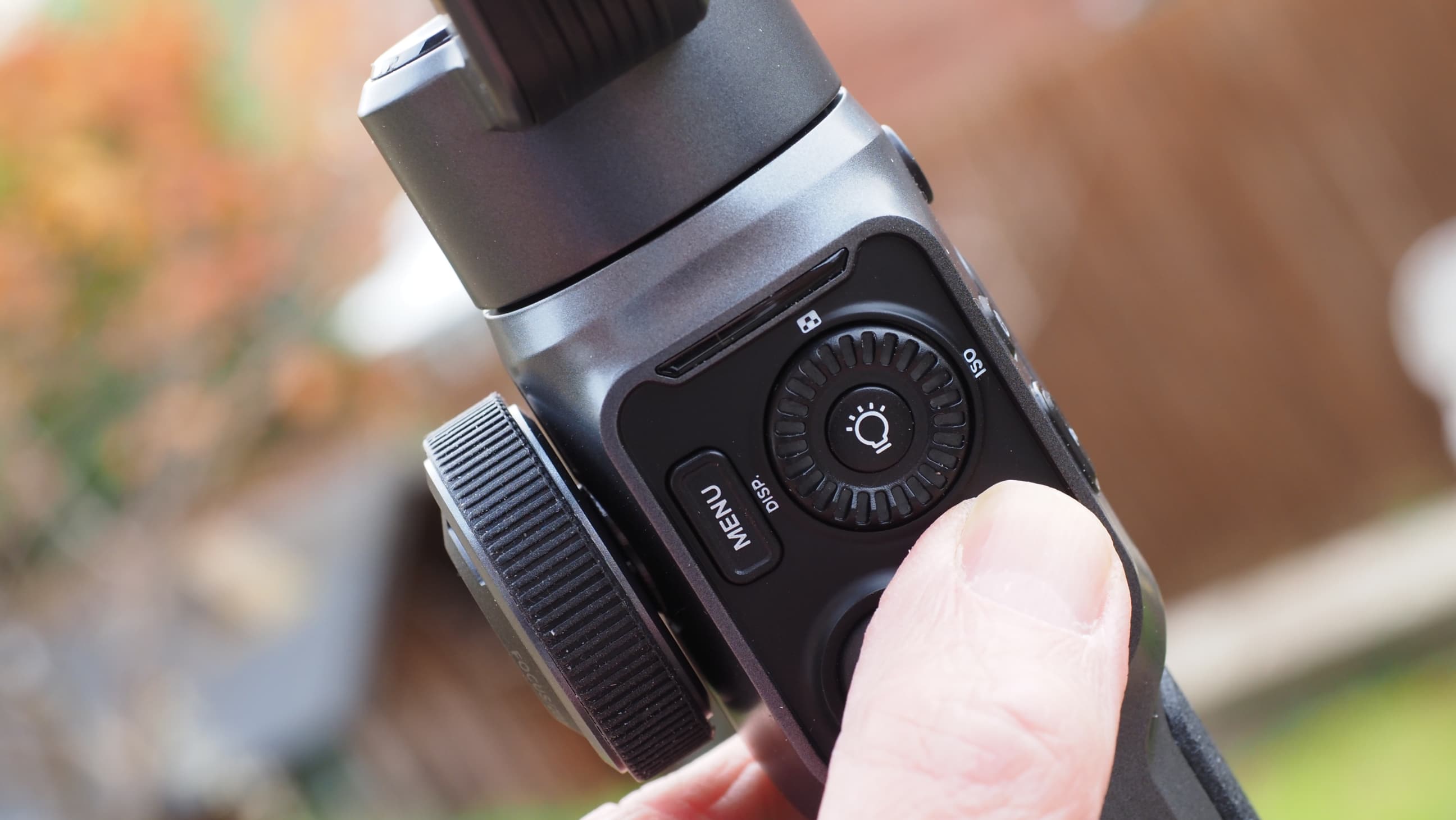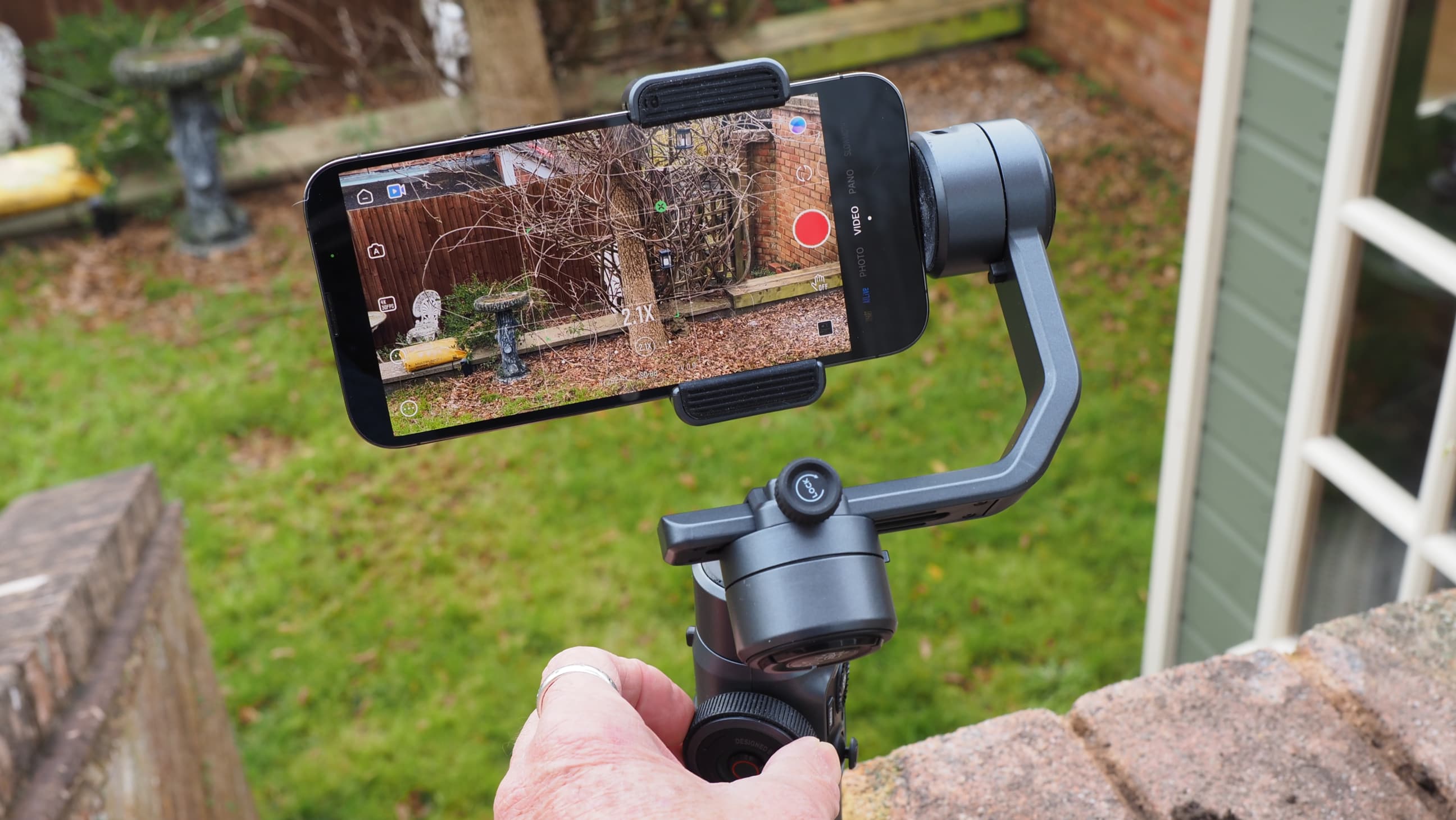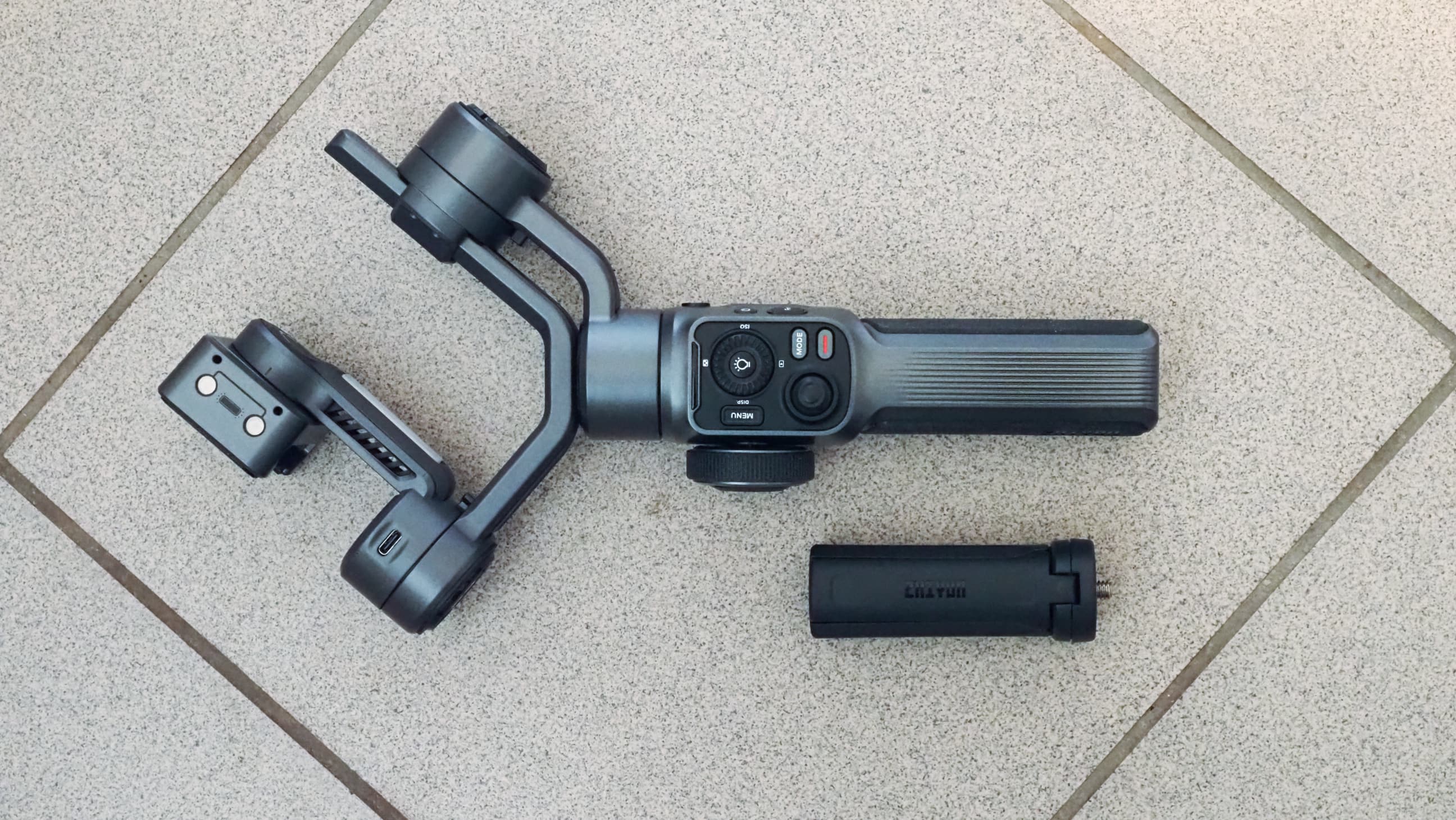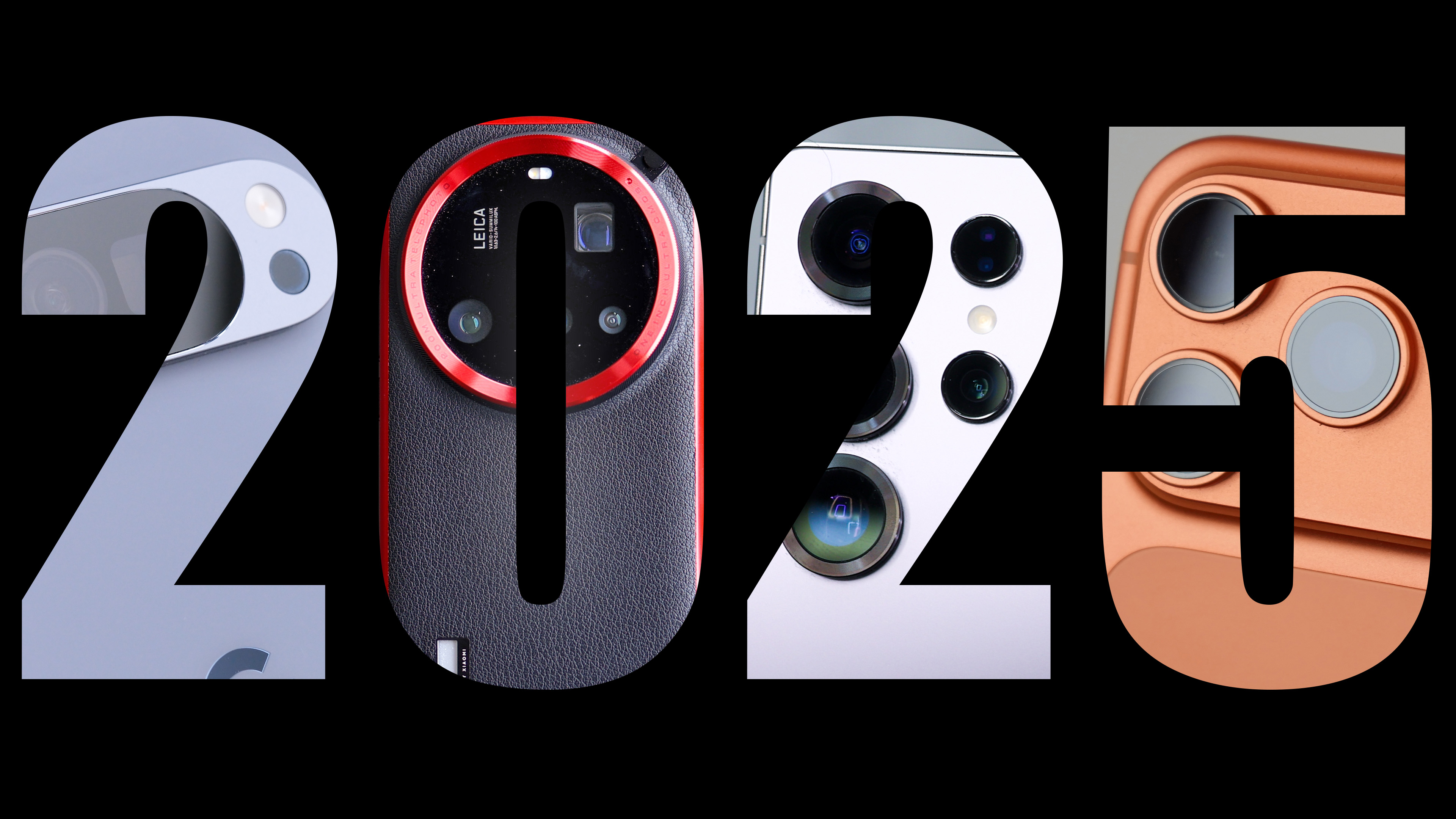Digital Camera World Verdict
The Zhiyun Smooth 5S handled our iPhone 13 Pro Max and its 3-camera array with no problems, and its fill light is both powerful and simple to use. But with the phone’s accessory port jammed up against the tilt motor for horizontal video, it makes using mic impractical, plus there are not one but two matching apps and the 5S has tiny mode lamps you can barely see in daylight.
Pros
- +
Quick to set up and balance
- +
Smooth operation, good choice of modes
- +
Powerful fill light
- +
Zoom/focus control wheel
Cons
- -
No screen
- -
Button functions depend on the app used
- -
Mode display is tiny
- -
Phone port is blocked for horizontal shooting
Why you can trust Digital Camera World
The Zhiyun Smooth 5S is Zhiyun’s top smartphone gimbal, replacing the Smooth 5, we guess, with a wider clamp for bigger phones, wider-spaced axes for wide-angle and add-on lenses, and new algorithms for the motors to cope with larger phones.
You can buy it on its own, or as a Combo kit which includes an additional magnetic fill light. You can actually add two of these, though you’ll have to buy the second separately. These supplement the built in fill light, which is one of this gimbal’s claims to fame.
It might qualify as one of the best gimbals for smartphones, but only if you don't need to attach a mic (more on this below) – and if you're going to the trouble of investing in a premium smartphone gimbal like this one, won't you also want to use one of the best microphones too? On the plus side, some of the best camera phones these days are pretty big, and the Smooth 5S should handle them easily.
Specifications
Battery runtime: Max 24k (standby), min 2.5h
Charging time: Max: 3h40min, min 2h (via PD fast charging)
Tilt mechanical range: Max: 209°, Standard: 349°, Min: -140°
Roll mechanical range: Max: 259°, Standard: 349°, Min: -90°
Pan mechanical range: Max: 180°, Standard: 360°, Min: -180°
Dimensions: 311 x 168 x 52mm
Weight: 625g (with battery)
Key features
The Zhiyun Smooth 5S is a 3-axis gimbal with a built in fill light that can deliver up to 650 lux. It also has two magnetic mounting points for a further two snap-on fill lights, each of which takes a selection of magnetic color filters. One light is included in the Combo kit.
There’s a control panel with mode and record buttons, a joystick, a button for the light and a control wheel to adjust its intensity. There is also a Menu button to take you to the home screen of the ZY Cami companion app and buttons around the controller for camera settings, but these didn’t appear to do anything with the ZY Cami app. Zhiyun also offers a more advanced StaCam app with paid-for premium features and the Filmic Pro app, which is also paid for, should be compatible (it is compatible with the previous Smooth 5, at least).
You can also use the Smooth 5S with a non-paired app like the native iOS camera app. It will still function fine as a gimbal, complete with joystick control and most operating modes, but the side dial won’t do anything.
The best camera deals, reviews, product advice, and unmissable photography news, direct to your inbox!
There’s no display for showing more detailed gimbal settings and controls – you’ll need the ZY Cami app for that – but there is a trigger at the front for resetting the gimbal to its straight-ahead position or flipping it around for selfies.
Gimbal modes include basics like Pan Follow, Lock, Follow and POV modes, plus Vortex (Inception style) and Sling modes.
Handling and performance
Balancing the Zhiyun Smooth 5S is easy, though as usual with smartphone gimbals you have to balance the tilt axis by wrestling with the jaws of the clamp.
Unusually, only the pan axis has a locking switch. The tilt and roll axes have strong detents which click into place – you have to use a fair amount of force to unlock them, which is worrying if you can never remember which way they are supposed to turn.
There’s enough length in the tilt axis bar to accommodate and balance the biggest phones, but mounting a phone on the Smooth 5S reveals its biggest problem. Like so many smartphone gimbals, it jams the right edge of the phone up against the tilt motor, completely covering the port. This makes fitting a mic next to impossible unless you can find a very compact right-angle adaptor and don’t mind rebalancing the gimbal with your phone further from the tilt motor to allow space.
There is an an accessory mounting thread on the side of the grip, but that seems optimistic given the mic connection issues.
The lack of a display isn’t a major issue, but the mode display text is absolutely tiny. You can perhaps figure out which mode you’re in from the position of the little lamps, but you might need to fetch your glasses to check for sure.
The tiny mode indicator lamps also double as charging indicators, cycling through from left to right while the gimbal is charging.
It’s hard to fault this gimbal’s performance. Its motors never had the slightest trouble with our bulky iPhone and it switched seamlessly from regular to low-level sling mode.
The zoom wheel worked well with the ZY Cami app, though there was a noticeable jump when it switched from the regular camera to the ultra-wide camera.
Verdict
The Zhiyun Smooth 5S is a perfectly good gimbal but with a weird app setup where you need ZY Cami for some things, StaCam for more advanced features and a ZY Prime membership for others. The Smooth 5S feels well made and is easy to set up, but the mode indicator lamps and text are ridiculously small and using these to indicate charging is hardly intuitive. The documentation is pretty thin too, but luckily there’s plenty of on YouTube. The Zhiyun Smooth 5S is very effective, and while the apps are a bit of a muddle, you can use it with your phone's native app too with basic stabilization and controls.
See also our guide to the best iPhone power banks, and the best iPhone tripods

Rod is an independent photography journalist and editor, and a long-standing Digital Camera World contributor, having previously worked as DCW's Group Reviews editor. Before that he has been technique editor on N-Photo, Head of Testing for the photography division and Camera Channel editor on TechRadar, as well as contributing to many other publications. He has been writing about photography technique, photo editing and digital cameras since they first appeared, and before that began his career writing about film photography. He has used and reviewed practically every interchangeable lens camera launched in the past 20 years, from entry-level DSLRs to medium format cameras, together with lenses, tripods, gimbals, light meters, camera bags and more. Rod has his own camera gear blog at fotovolo.com but also writes about photo-editing applications and techniques at lifeafterphotoshop.com
